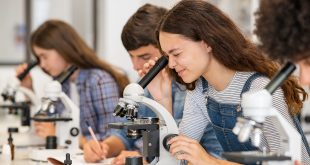In 1973, Torontonian Frank L. Graham and Alex J. van der Eb of The Netherlands co-developed a technique for introducing DNA into mammalian cells. They were originally working on an assay involving DEAE-dextran, one of the first chemical reagents used to transfer nucleic acids into cultured mammalian cells, that would allow them to analyze various fractions and fragments of infectious adenovirus DNA for its ability to infect and transform cells. They could not adapt the DEAE-dextran technique for their purposes. Instead, van der Eb suggested they look at the cellular uptake of labelled DNA as a measure of the efficiency of the assay. As a result, Graham and van der Eb were able to develop an assay for adenovirus infectivity. They also showed that “DNA fragments could transform and determined the size and location of the adenovirus transforming region, setting the stage for hundreds of subsequent studies involving DNA-mediated gene transfer,” as Graham wrote in 1988.
Check Also
From the willow: A medicine that transcends time
It goes as far back as the Assyrians who documented the use of willow leaves …
 BioLab Business Magazine Together, we reach farther into the Canadian Science community
BioLab Business Magazine Together, we reach farther into the Canadian Science community





